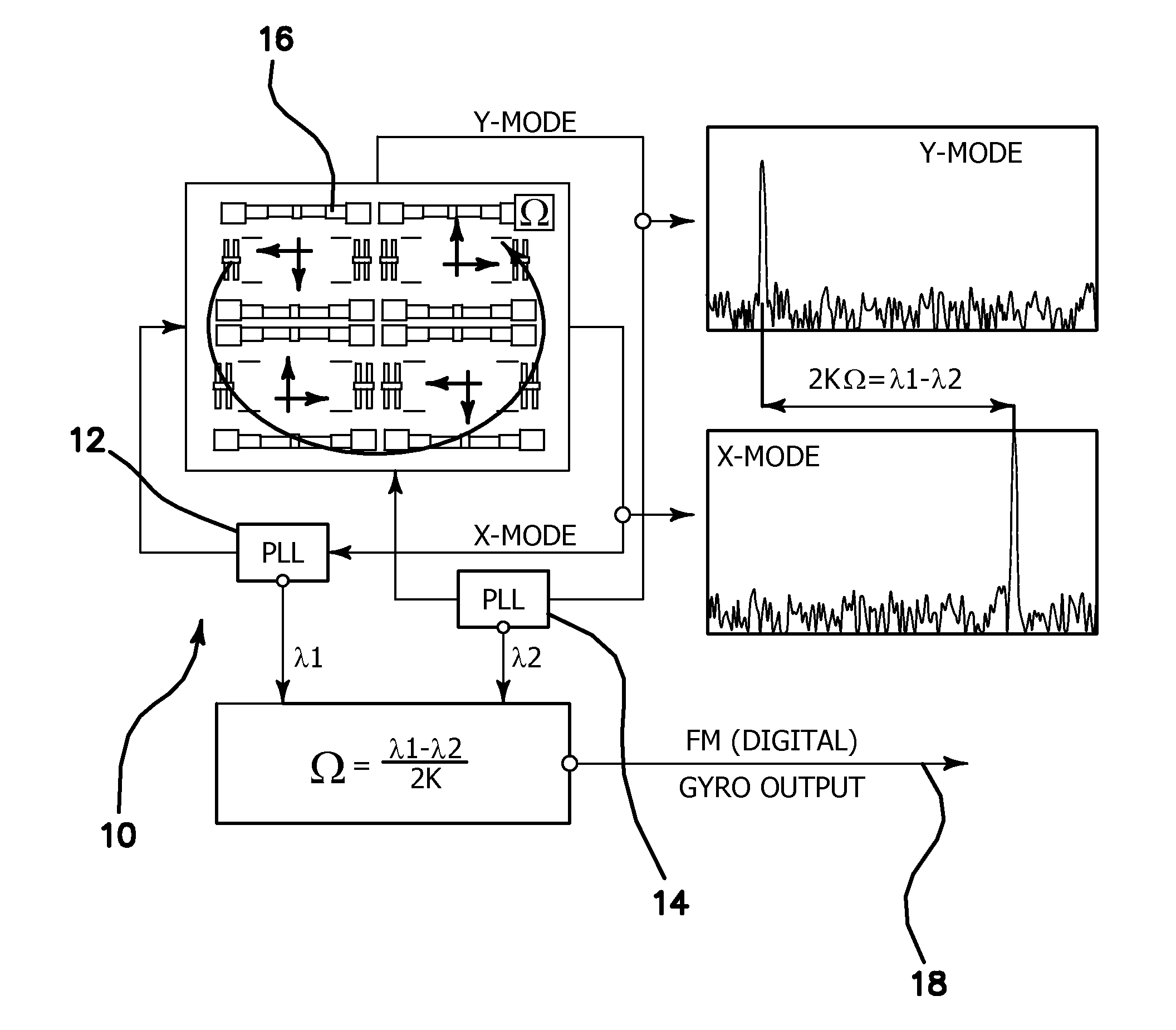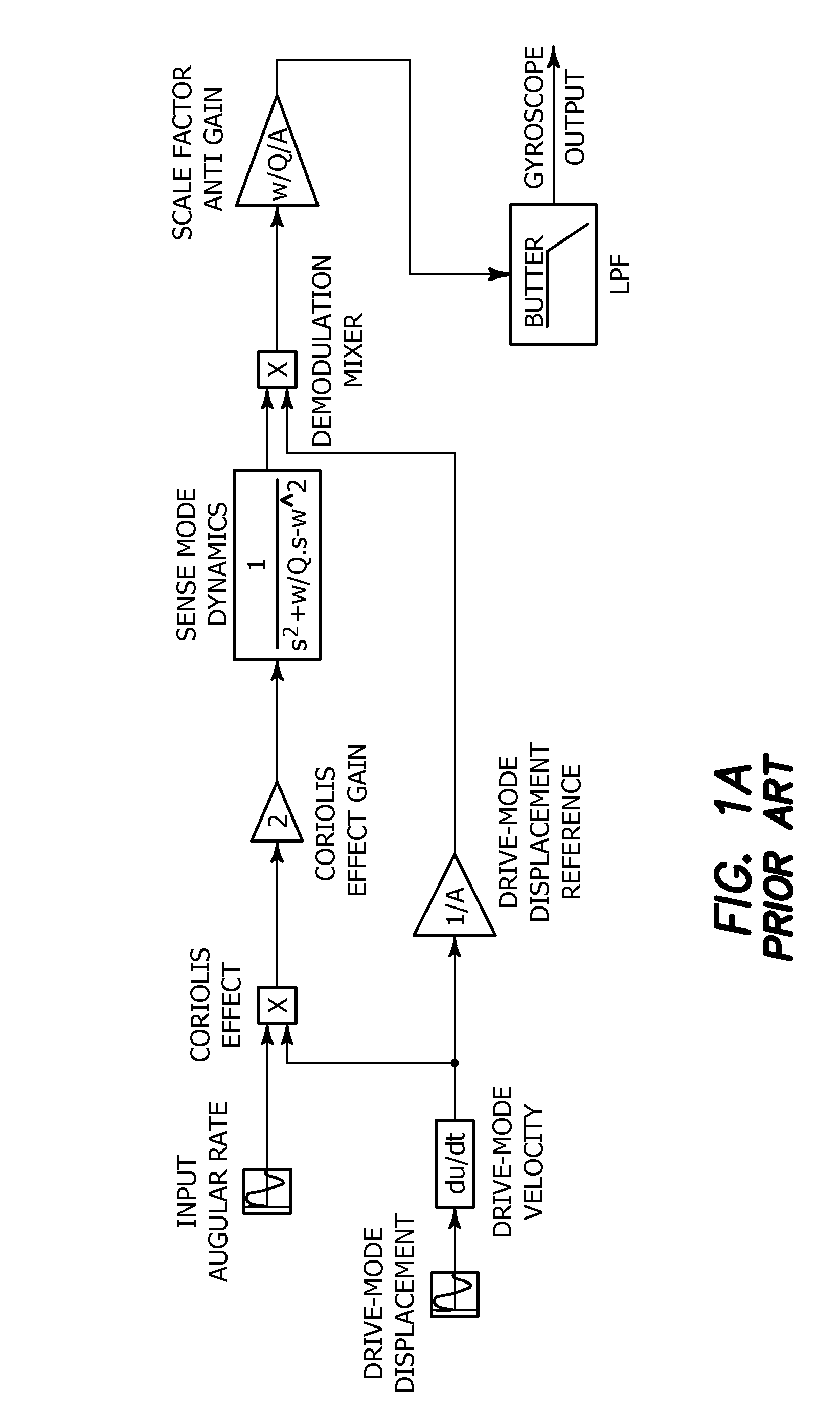High range digital angular rate sensor based on frequency modulation
a digital angular rate sensor and frequency modulation technology, applied in the direction of acceleration measurement using interia force, turn-sensitive devices, instruments, etc., can solve the problem of imposing fundamental limitations on dynamic range and output stability, preventing mems gyroscopes from many potential applications, and reducing the gain-bandwidth tradeoff. , the effect of reducing the measurement bandwidth
- Summary
- Abstract
- Description
- Claims
- Application Information
AI Technical Summary
Benefits of technology
Problems solved by technology
Method used
Image
Examples
Embodiment Construction
[0046]The illustrated embodiments address the following major limitations of conventional gyroscopes: analog output, narrow bandwidth and linear range, and temperature sensitivity. Currently these problems are solved by digitizing the inherently analog output signals (which increases the power consumption and degrades noise performance), lowering the quality factor (which degrades noise performance), and using a temperature sensor (which results in temperature lags and hysteresis), respectively.
[0047]The current invention comprises an FM gyroscope 16 with inherently digital output. Tradeoff between quality factor and range and bandwidth is eliminated, allowing the use of ultra-high Q for improved noise performance without limiting the bandwidth and range. Temperature is self-sensed and self-calibrated, so that hysteresis and lags are eliminated. In one embodiment, the invention can be used in any application requiring precise and stable detection of inertial rotation, including moti...
PUM
 Login to View More
Login to View More Abstract
Description
Claims
Application Information
 Login to View More
Login to View More - R&D
- Intellectual Property
- Life Sciences
- Materials
- Tech Scout
- Unparalleled Data Quality
- Higher Quality Content
- 60% Fewer Hallucinations
Browse by: Latest US Patents, China's latest patents, Technical Efficacy Thesaurus, Application Domain, Technology Topic, Popular Technical Reports.
© 2025 PatSnap. All rights reserved.Legal|Privacy policy|Modern Slavery Act Transparency Statement|Sitemap|About US| Contact US: help@patsnap.com



